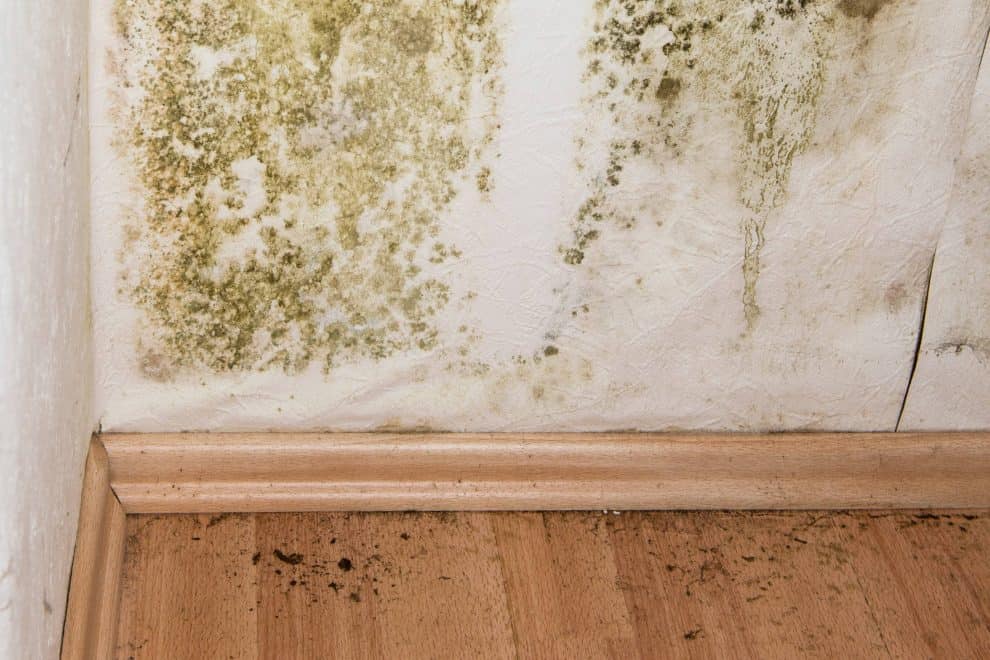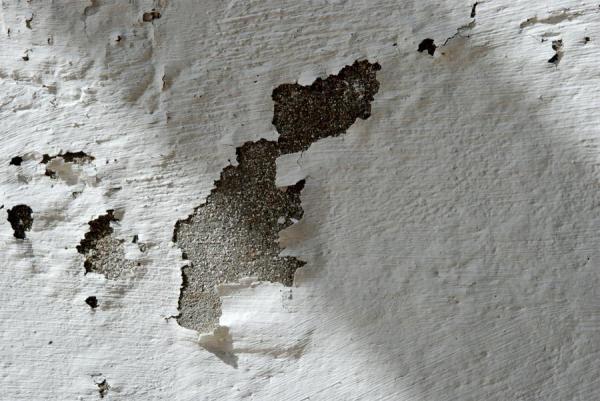House walls can become damp for a variety of reasons. If left untreated, this can lead to major issues like peeling paint, stains, and mould growth.
There are several steps that can be taken to remedy the situation. The initial step is identifying and correcting the source of the issue.
Moisture Penetration is essentially what damp is.
Penetrating damp can be caused by leaks from appliances like radiators, washing machines and water heaters. This allows water to seep into a building’s internal walls and masonry.
Damp will first make itself known through a musty smell before it starts to emerge onto your internal walls.
It will start to appear as a stain on a wall, which will slowly start to become moist.
It will then manifest itself through a dark green or black patch of mould on the wall.
This is highly toxic. As the mould is a living organism like a plant, it will propagate itself through releasing toxic mould spores into the air in the room and will not only cause further mouldy areas of wall, it will make the air you breath inside the house toxic and very bad for your health.
However the main cause of damp in the home is when water seeps into walls through gaps and cracks that aren’t sealed with a waterproof wall coating, leaving moisture trapped and keeping walls damp.
Moisture seeping into brickwork can cause extensive damage, leading to spalling (flaking or crumbling) on the surface.
Furthermore, moisture damage to mortar joints that hold bricks together weakens them and creates weak points within the structure.
Buildings of all ages can succumb to this condition at any point in their lifespan, especially those on the coast that are exposed to salty sea spray and wind-driven rain.
Applying breathable masonry waterproof cream such as ProPerla exterior wall coatings helps reduce water damage and prevents penetrating damp.
Poor drainage can also cause dampness
Poor drainage in house walls can be a major source of dampness.
Whether it’s caused by storm water, ground water from an inadequate downspout, or simply due to a clogged main sewer line, drainage is an ongoing issue that must be addressed.
Rising damp is caused when ground and surface water collect at the base of a wall, moving upwards due to various causes.

Cracks in render and masonry or defective pointing can allow rainwater to seep into bricks, leading to penetrating damp that damages plaster and masonry as well as decaying wood surfaces.
Rising damp is another issue that can be caused by inadequate drainage around the property and planting too close to walls. Moisture seeps up through porous materials in house walls and rises up towards the ceiling of a room.
Poor condition rendering can also cause damp
A render coat is usually the final coating on house walls and it plays an integral role in maintaining structural stability of a building. Furthermore, it gives your house its desired aesthetic appearance.
Render must not be left uncoated though. This is because it can be porous and literally absorb water like a sponge, into the wall.
A high quality weatherproof wall coating is by far the best way to combat this problem, and you can get a quote from us for this system by calling us on 0800 970 4928
The wall coating system permanently stops damp and protects your home walls against the inclement weather here in the UK.

Poor Construction Materials can also cause dampness
Damp walls can be a breeding ground for microorganisms and other health issues, while making a home feel unwelcoming and cold inside.
Wall dampness is caused by the interaction between moisture, materials and environmental conditions within buildings.
Common causes include rainwater, groundwater, plumbing issues, construction moisture and indoor/outdoor humidity levels.
Many types of wood, paper products and furnishings, including laminated and adhesive-faced boards, composite wooden material panels and masonry pockets, may be damaged by wet rain that seep through walls due to capillary action.
This effect is especially severe on oriented strand board (OSB), plywood (PCI) and low-density fibreboard (LDF), which often face direct water exposure without having a drainage layer beneath their cladding.
What to do to cure wall dampness.
As we have said before, living in a damp home is very bad for your health.
According to the English Housing Survey, around 904,000 homes in England had damp problems in 2021. Of these, around 11% in the private rented sector had damp problems compared with 4% in the social-rented sector and 2% of owner-occupied homes.
Source:commonslibrary.parliament.uk
Damp must not be ignored. It won’t simply go away when the weather gets better. It’s always there.
The way to cure damp is the fix the SOURCE of the issue.
This is usually poorly maintained exterior walls, although there are other factors that cause damp.
We offer a range of high quality and long life exterior wall coating products which cure damp.
If you are living in a damp house, please contact us as we may be bale to help you.
Give us a call on 0800 970 4928 or email us and request a free damp survey.

